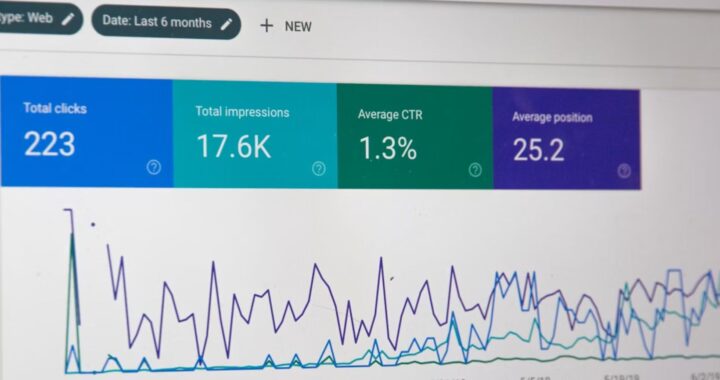Save On Monthly Internet Bill: 5 Leading Effective Tips

The cost of living is increasing day by day, and internet bills are not an exception, but having internet does not have to break the bank. When considering cost-cutting measures, it’s essential to understand your billing and know exactly what you’re paying for. You could be paying for equipment, special fees, or you might have picked a plan with a yearly hike.
But once you really look into it, you’ll know where you might need the adjustments to save up. Moreover, if you cut the costs smartly, then you can have an internet connection not sacrificing speed or a reliable connection.
Read on to learn about the top 5 effective tips you can implement to save on your monthly internet billing.
- Choose an Affordable Internet Provider
This is a great way to save on the internet bill if you have high bills with your current provider, or you aren’t happy with the “price vs. speed” you’re getting.
You can use this opportunity to find affordable internet plans, so you step away from overpaying for the same speeds. Don’t worry, though. Anyone can be stuck in the loop, but you can choose to get out.
- Switch your Internet Plan
There is also a high chance you have the wrong plan and are overpaying, though you may have the right provider. In some cases, the provider and plan are both issues that may be resolved by switching the provider. The key question you should be asking is, “How much internet speed do I really need?” To determine this, you need to understand your usage.
For your ease, we have compiled the following table to provide you with a better understanding of your needs. This will help you understand whether you’re paying for more. You may be someone who needs an upgrade (because your needs aren’t met), and you’re getting an overage fee.

Remember: A higher plan not fitting your actual usage may cost you a lot, and the right one will save you more than you think.
| Internet Download Speed | Best For | Ideal Number of Users |
| 5–20 Mbps | Checking emailBasic browsingStreaming music on one device | 1–2 |
| 20–40 Mbps | Streaming video in SD on one deviceWork from home with light appsVideo calls (Zoom/Skype)Light online gamingHD video streaming | 2–3 |
| 40–100 Mbps | Streaming HD video on a few devicesOnline gaming (multiplayer)Downloading moderate files | 3–5 |
| 100–500 Mbps | Streaming UHD/4K video on multiple screensHeavy online gamingLarge file downloads | 5–8 |
| 500–1,000+ Mbps | Smart homes with many devices4K streaming on multiple TVsDoing almost anything at once without slowdowns | 8+ |
- Get Your Own Equipment
This might seem like taking a huge step when we’re talking about saving. But it will save you a lot in the long run. Most providers do give you a router, but it is on a rental basis. The rental fee, which is about $10 to $20, may seem like nothing in the first 12 or 24 months, but it will increase. Purchasing your own equipment will save you from such future costs.
Moreover, routers don’t deplete tech as fast; experts say one router’s tech can last up to 5 years. But if you use more high-bandwidth devices, then a router will effectively work for 2 to 3 years.
With that point in place, it brings us to the next point about other such costs hidden within the total billing of your plan. Keep reading to understand these costs better.
- Look For Additional Charges
Many providers advertise with competitive pricing and lower rates. But these charges are subject to change over time, such as 12, 24, or 36 months. In the past, these prices weren’t mentioned transparently and were referred to as “hidden costs”.
Now, there are “Broadband labels”, much like the labels on food items. The details entail all that comes with the advertised price of the Internet/TV/Phone plans. This has made customers feel assured. It is a clear method of listing what the customers will get, such as speed, prices, contract terms, and performance details.
For you, we collected data about some common additional charges to keep an eye out for when choosing a provider, as not all have the exact same labels. Thus, you must do your research.
Note: The key is to ask questions about the “Broadband labels” and be fully aware of all the additional costs occurring monthly, in 6 months, and annually when choosing a provider and a plan. It is a long-term decision, so invest smartly.
| Additional Costs To Look For | What These Mean For You | How to Avoid It |
| Equipment Rental Fees | $10–$20/month is the range to lease a modem or router. | Buy your own compatible device and return the rented equipment. |
| Installation/Activation | One-time setup fees range from $50–$100. | Ask for self-install options or request a fee waiver during signup. |
| Data Overage Charges | Extra costs if you exceed your monthly data cap. Providers usually charge $10 for every 50GB over the limit, but can go up to $200. This depends on the provider and plan chosen. | Monitor your usage and consider an unlimited plan if needed. |
| Early Termination Fees | $100–$200 range is for canceling a contract before it ends. | Check contract terms; opt for no-contract plans if you need flexibility. |
| Promo Rate Expiration | Low intro prices that can jump $20–$40 after 6–12 months. | Mark your calendar and renegotiate or switch providers before rates increase. |
| Additional Info: Quick Look: Possible Overall Savings Saving StrategyPotential Monthly SavingsAnnual Savings PotentialSwitch to a lower-tier plan$10–$30$120–$360Buy your own modem/router$10–$20$120–$240Negotiate with the provider$10–$40$120–$480Government assistanceUp to $30–$75$360–$900 |
- Assistance Programs: Cheap Internet Access
In the U.S., many providers offer low-cost internet for people with tight budgets. This is for qualifying people like single parents, students, remote workers, and small business owners. These programs aim to help make the internet more affordable and accessible across the U.S.
| Provider | Programs | Who It Helps | Plan Details |
| Cox | Connect2Compete | Families with K–12 students | From $9.95/mo.* With speeds up to 100 Mbps |
| Xfinity | Internet Essentials | Low-income households (must qualify for federal aid). No credit check, contracts, or installation fees. | From $14.95/mo.* (75 Mbps) and $29.95/mo. (100 Mbps) |
| Mediacom | Xtream Connect | Homes with a K–12 student on free/reduced lunch. No outstanding bills or unreturned equipment. | From $9.95/mo.* (25 Mbps). No contracts, fees, or equipment costs; free modem lease. |
*All prices are subject to change
Final Thoughts
The internet is an unavoidable need, but that doesn’t mean you have to overpay. By being a little proactive and investing in understanding your requirements, you ought to save a lot.
From reviewing your plan to negotiating rates, taking advantage of promotions, and learning about additional charges, you’ll do yourself a favor by doing the homework beforehand.

 How Online Blackjack Combines Strategy, Design, and Modern Technology
How Online Blackjack Combines Strategy, Design, and Modern Technology  From Code to Conversion: How Smart Web Design Drives Business Growth
From Code to Conversion: How Smart Web Design Drives Business Growth  From Slots to Live Dealers: The Best Game Types to Try at Crypto Casinos
From Slots to Live Dealers: The Best Game Types to Try at Crypto Casinos